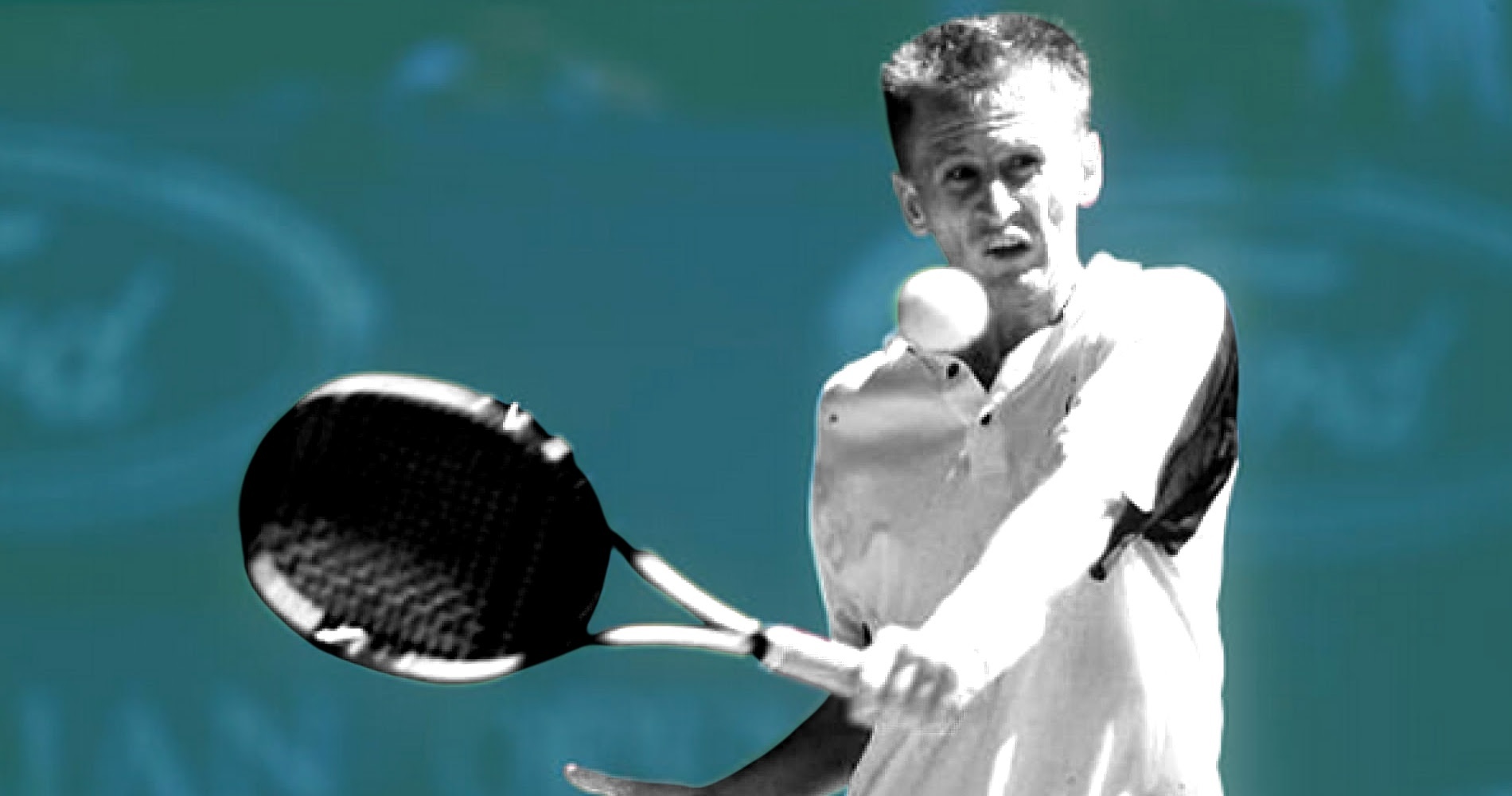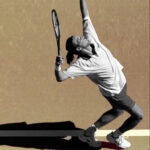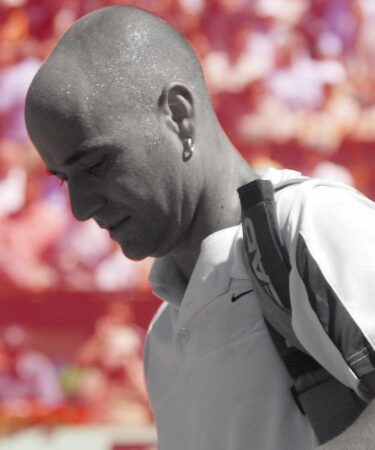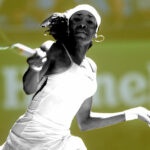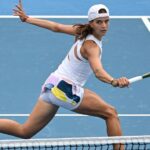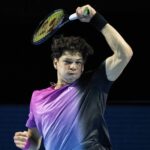March 29, 1998: Marcelo Rios makes history for South America
How a tennis player from Chile reached the top of the world and made history – by beating the legendary Andre Agassi in Miami

On this day, March 29, 1998, Marcelo Rios defeated Andre Agassi in the Miami final (7-5, 6-3, 6-4), to become the first South American player to ever reach world No 1. He was also the second player in tennis history, after Ivan Lendl, to reach the top spot without having previously won a Grand Slam tournament. The Chilean, runner-up at the Australian Open two months before, played the best tennis of his career to triumph at both Indian Wells and Miami, a feat that was only achieved by three players before him.
The players involved: Marcelo Rios and Andre Agassi
- Marcelo Rios – El Chino
Born in 1975, Marcelo Rios, nicknamed “El Chino”, was considered a very promising and entertaining player since 1994, when at the age of 17, he gave a hard time to world No 1 Pete Sampras at Roland-Garros (losing 7-6, 7-6, 6-4). The following year, he claimed his first title, in Bologna (defeating Marcelo Filippini in the final, 6-4, 6-2), and soon added two other trophies to his list of achievements (in Amsterdam and Kuala Lumpur). In 1996, at the age of 20, he reached the semi-finals at Indian Wells, Monte-Carlo and Toronto, becoming the first Chilean tennis player to enter the top 10.
In 1997, the Santiago-born won his first Masters 1000 tournament, at Monte-Carlo, defeating Alex Corretja in the final (6-4, 6-3, 6-3), but he also finished runner-up at the Rome Masters 1000 and reached the quarter- finals at both the Australian Open and the US Open.
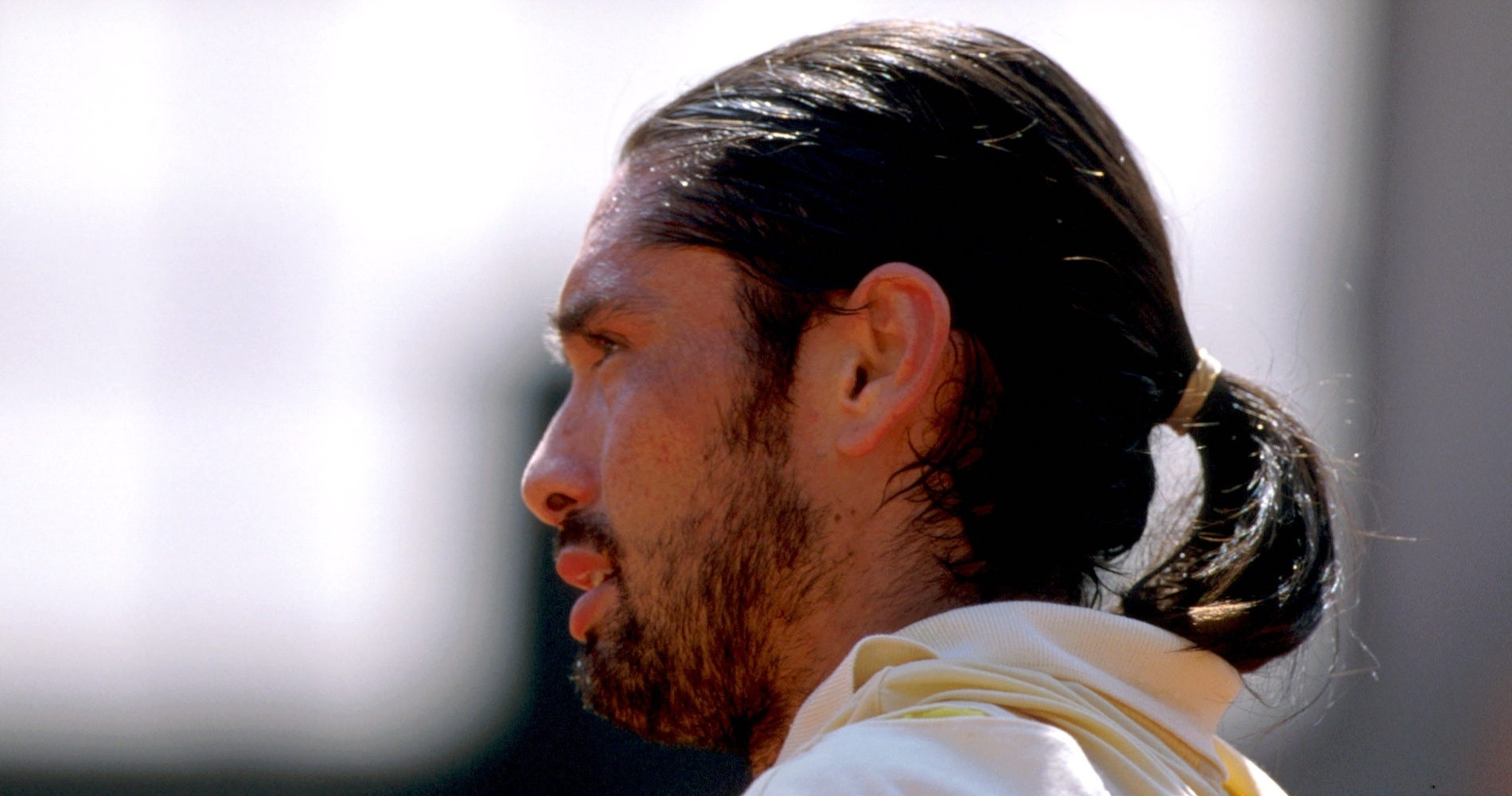
Climbing as high as world No 6, he finished the year as world No 10, and he made an impressive start in 1998, reaching the Australian Open final (lost to Petr Korda, 6-2, 6-2, 6-2) before triumphing at Indian Wells. He was now world No 3 and could reach world No 1 if he was to win the Miami Open. Known for his smooth game style and his great touch, Rios was also well known for his bad temper, especially towards fans and journalists: he was very reluctant to sign any autographs and it was almost impossible to get anything out of him in interviews, except mumbles and abuse.
- Andre Agassi – 3-time major champion
Andre Agassi, the Las Vegas Kid, was a tennis legend. He turned professional in 1986 and soon become one of tennis’ biggest superstars, thanks to his amazing tennis skills but also to his outrageous fashion, including the iconic denim shorts and the pink bike shorts (worn as underlayer).
Taught by his father and bred at the Nick Bollettieri Academy, his game relied on a great return (the best of his time) and on taking the ball on the rise on both sides with incredible power, which was revolutionary at the time and then copied by generations of tennis players.
After finishing runner-up three times, once at the 1990 US Open and twice in Roland-Garros (1990 and 1991), he claimed his first Grand Slam tournament at Wimbledon in 1992, defeating big server Goran Ivanisevic in the final (6-7, 6-4, 6-4, 1-6, 6-4). This title was followed by the 1994 US Open and the 1995 Australian Open, the only time he beat his eternal rival, Pete Sampras, in a Grand Slam final (4-6, 6-1, 7-6, 6-4). Agassi reached world No 1 shortly after this success, on April 10, 1995, for 30 weeks.
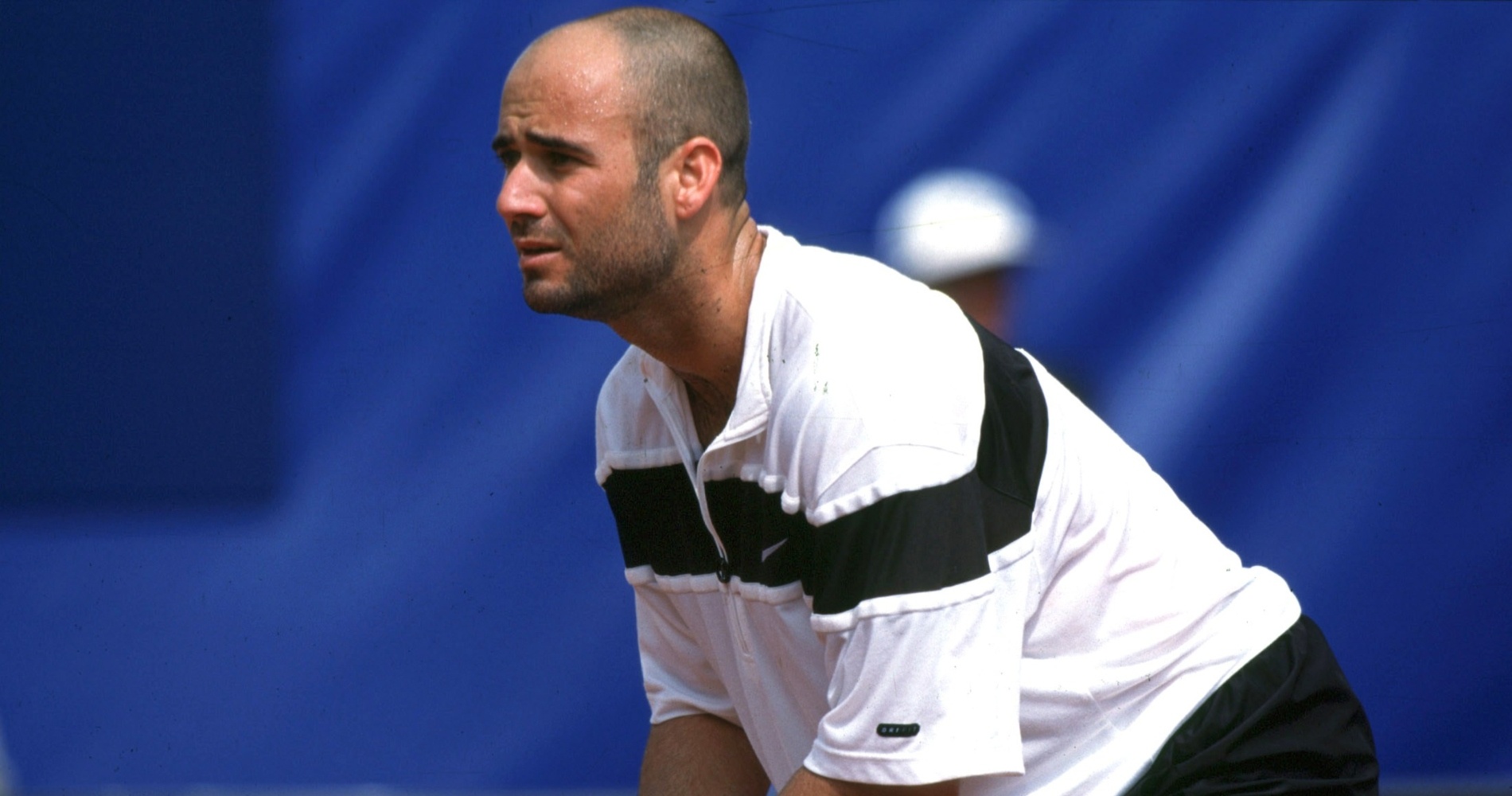
Through the summer of 1995, he went into an impressive winning streak, making him the US Open favourite, but he was defeated by Sampras in the final (6-4, 6-3, 4-6, 7-5). Extremely disappointed, he only attended one other tournament until the end of the season. In 1996 and 1997, despite a gold medal claimed at the 1996 Olympic Games in Atlanta, Agassi had a very hard time and his ranking dropped as low as No 141 in the world. Displaying great humility, he went back to play on the Challenger tour at the end of 1997 to regain confidence, and he started strong in 1998, jumping from world No 110 to world No 31 in only five tournaments, claiming two titles in Scottsdale and San Jose, where he even defeated Sampras in the final (6-2, 6-4).
The place : Key Biscayne, Miami Open
The Miami Tennis Open, originally named the Lipton International Players Championship, was held for the first time in 1985, in Delray Beach, with the idea of being the first big tennis event of the year (at the time, the Australian Open was held in December). The tournament moved to Key Biscayne in 1987, and Miloslav Mecir was the first to triumph at the new Crandon Park venue. The event was played on slow hard courts, in extreme heat and humidity. Nonetheless, with outstanding prize money and a 96-player draw, in the early 1990s, it was considered as one of the biggest tennis tournaments in the world outside of Grand Slams. Andre Agassi had already won the event three times, in 1990, 1995 and 1996.
The facts : Marcelos Rios, #1 in the ATP rankings
The 1998 Miami final featured two of the most exciting players of the early season: Marcelo Rios, 22 years old, who seemed to have mastered his temper and was now playing up to his amazing potential, and Andre Agassi, who was rising back from the dead and had come back from world No 141 at the end 1997, to world No 31, in only four months.
Although they both played mainly from the baseline and liked to take the ball on the rise, their game styles were different, as Agassi could hit the ball much harder, while Rios relied more on his anticipation, his touch and his ability to surprise the opponent by hitting unexpected angles.
This final was extremely important for the Chilean. Although he had started the year as world No 10, his great results, combined with Pete Sampras’ struggle in the first months of 1998, made him a contender for world No 1. This scenario still seemed very unlikely a few weeks before, but Rios, playing the best tennis of his career, made it possible by claiming the title at Indian Wells, where he outplayed Greg Rusedski in the final (6-3, 6-7, 7-6, 6-4). Now, if he could beat Agassi, he would reach the pinnacle of his sport on the following Monday.
Rios, recently appointed by Sports Illustrated “the most hated player on the Tour”, had the support of a group of noisy Chilean fans from the first to the last point of an almost perfect match. “El Chino” outplayed Agassi in almost every aspect of the game, hitting no less than 46 winners, while the American only hit 22. Rios was helped by a great performance on serve, with an unusual number of 13 aces and 75% success behind his first serve, against the best returner in the world. Agassi only obtained one break point, which he failed to convert, in the first set.
Rios prevailed, 7-5, 6-3, 6-4, triggering celebrations in the streets of Chile, where all his matches had been widely followed on television. He was only the fourth player to achieve the “Sunshine Double” (winning at both Indian Wells and Miami), after Jim Courier, Michael Chang and Pete Sampras. And, above all, he was now world No 1.
“Winning this, and beating Agassi in the final, the former No. 1, I can’t ask for more. Being the best player in the world for Chile is something that isn’t normal,” said Rios, according to The New York Times. “I feel really proud.”
Agassi praised his opponent’s performance.
“You have to address him like a big power. I thought I could back him into the paint, but the bottom line is, he doesn’t play his size, he moves well, he serves better than you expect, and you can’t wait for him to miss. It forces you to think, forces you to move, forces you to execute.”
The Las Vegas Kid added that, in order to be the world No 1 in the eyes of the other players, the next step for Rios was to win a Grand Slam.
What next : no Grand Slam win for Rios
Marcelo Rios’ rise to world No 1 would make him one of the biggest sports stars in the history of Chile. When he returned to Santiago, a reception was held, leading Rios to Chile’s President Eduardo Frei Ruiz-Tagle on La Moneda Palace.
“We don’t have a lot of sportsmen in Chile, so being No. 1 in tennis was pretty big,” Rios would tell the ATP, 20 years later.
Suffering from an elbow injury, Rios would only play three matches as world No 1, a spot he would only occupy for six weeks in total. Unlike Ivan Lendl, who, after having reached the top spot, had won numerous Grand Slams, Rios would remain the only male world No 1 in tennis history to never lift a major trophy. However, in 1999, he would become the first player in tennis history to win all the three clay-court Masters 1000 tournaments. He would remain a top 10 player until April 2000, before a series of injuries would prevent him from ever playing an entire season on the Tour. He would retire from the game in 2004, aged only 28.
Andre Agassi would finish the year as world No 6, although his Grand Slam results would be disappointing. In June 1999, he would finally triumph at Roland-Garros, defeating Andrei Medvedev in five sets (1-6, 2-6, 6-4, 6-3, 6-4), thus achieving a career Grand Slam. He would then finish runner-up to Pete Sampras at Wimbledon (6-3, 6-4, 7-5) and claim another Grand Slam crown at Flushing Meadows, defeating Todd Martin in the final (6-4, 6-7, 6-7, 6-3, 6-2). Thanks to that second US Open title, Agassi would reclaim the world No 1 spot, more than three years after having lost it.

